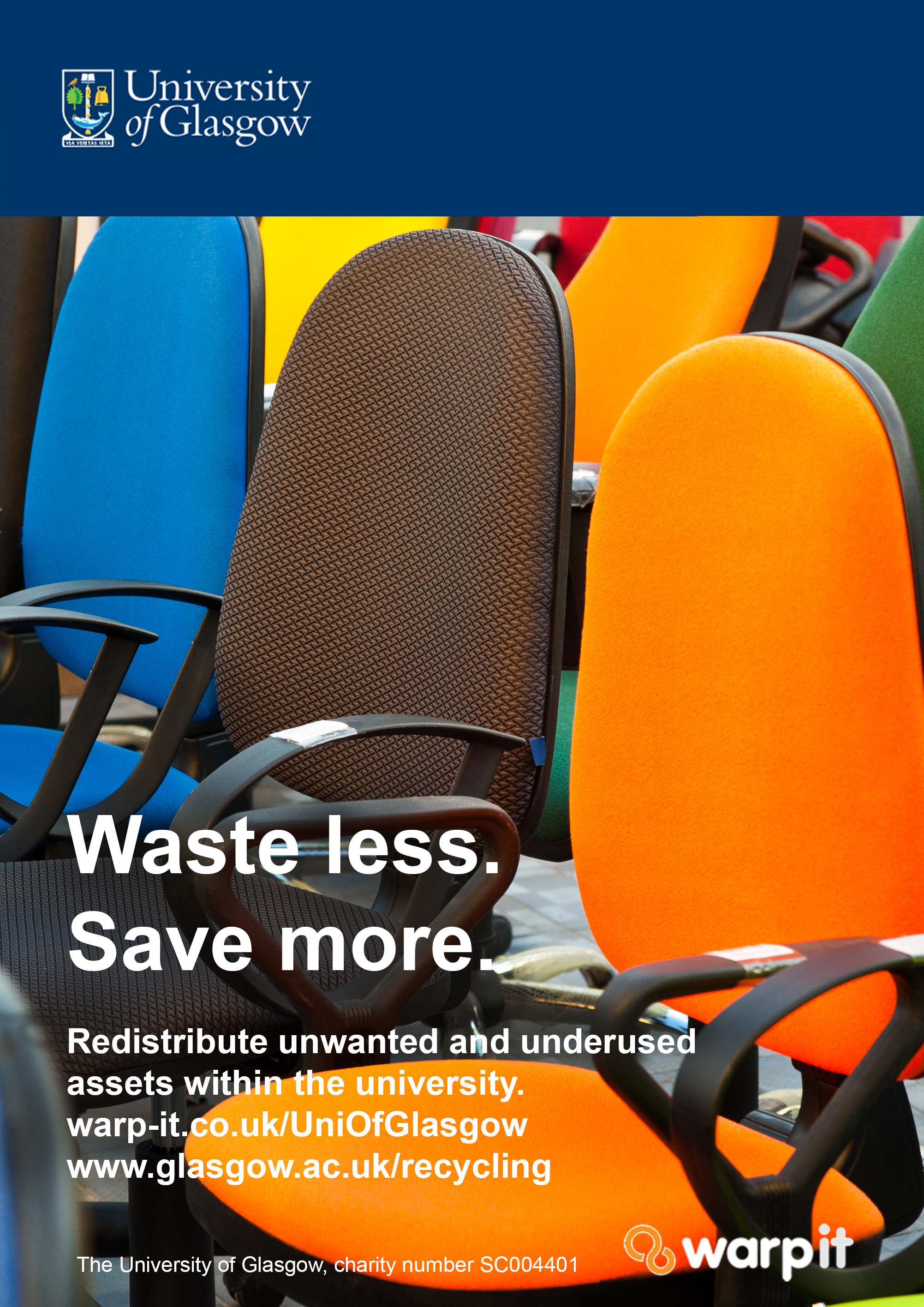In part three of this series covering organisation and city wide sharing of surplus assets, we go now to the University of Glasgow. If you missed the earlier instalments, please read part one and part two.
Please watch the video below.
The University of Glasgow started using Warp It for an internal process, to begin with.
They set up an internal marketplace and they already had a storage system. They did a big clear out and gave all those surplus assets to the not-for-profits in the city.
The University of Glasgow then liaised with other big players in the city, four universities, a very large Municipal Council and a very large hospital as well. Then entered Glasgow Social Enterprising Network, another umbrella network for not-for-profits. This then set the way for a strategic partnership in which all of the big players in the city are trading assets internally and externally.
After this, they engaged a logistics provider, so they could all work together more closely.
They explored that avenue and they engaged with a not-for-profit logistics social enterprise, who as well as doing the logistics like a normal delivery company, train vulnerable members of the society and deliver even more social value.

The University of Glasgow have made significant savings internally- approaching £600,000!
Where before they might have been doing this a bit more ad hoc, the deals weren’t tracked. So, now they have robust data and they’re making a better business case for reuse. In terms of the city-wide savings, there has been over £1.5m avoided by trading from all those partners.
Key lessons
Key lessons from the University of Glasgow show that if you can demonstrate the business advantages with robust data, it becomes an easier sale internally, across the city, and to link up with other large organisations to explore this type of activity.
Use your existing professional networks, whether its sustainability, procurement or facilities management. You will know the best networks to use to approach other staff who do your job in these other organisations.
There were legal issues and barriers to bringing everything to fruition but they were not insurmountable.
The point of recognition is that all those large organisations in the city have similar issues around the reuse of surplus assets. When you start to collaborate with each other, that’s when opportunities like group storage and group logistics can be explored for further savings and further social value.









